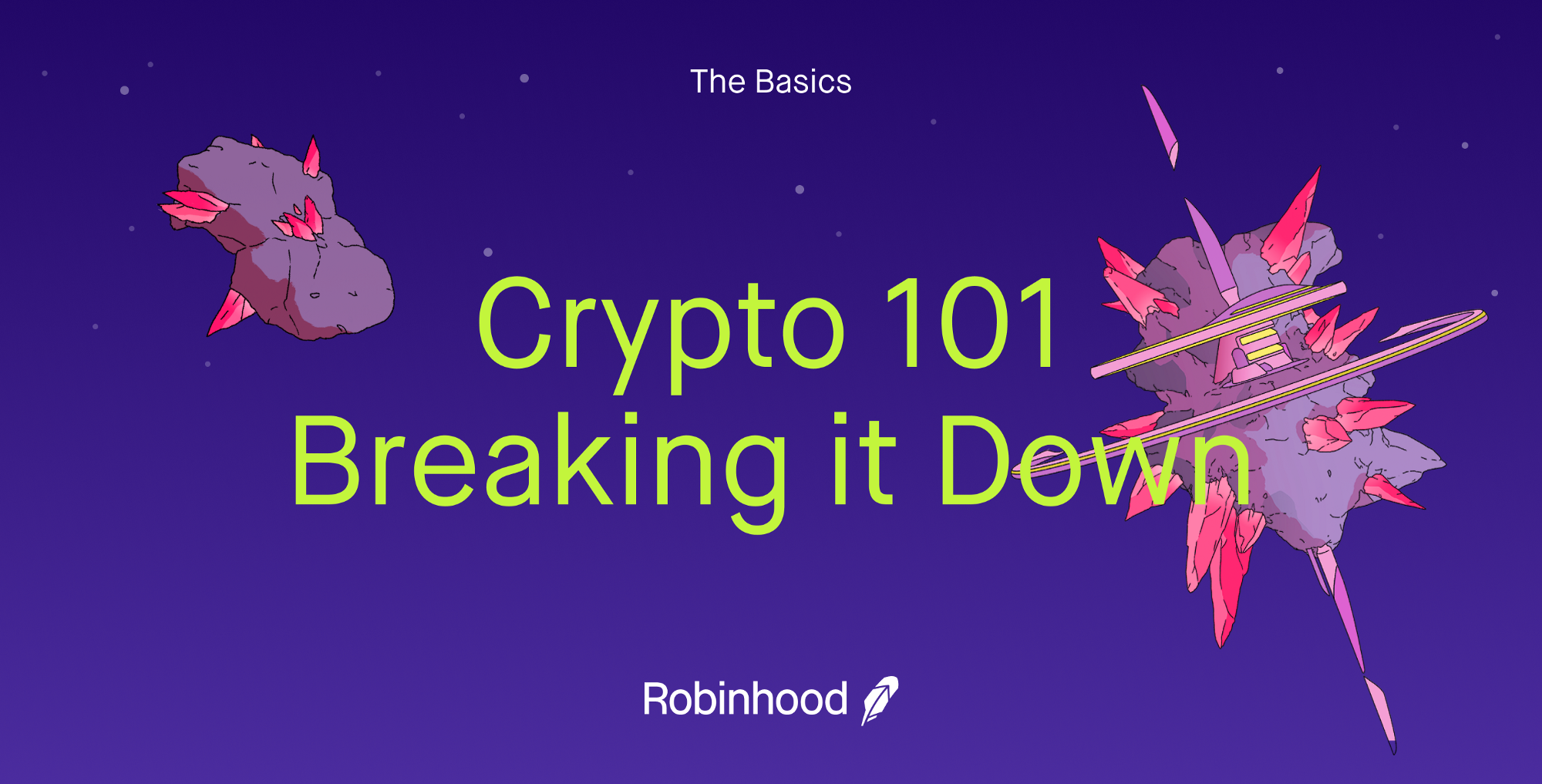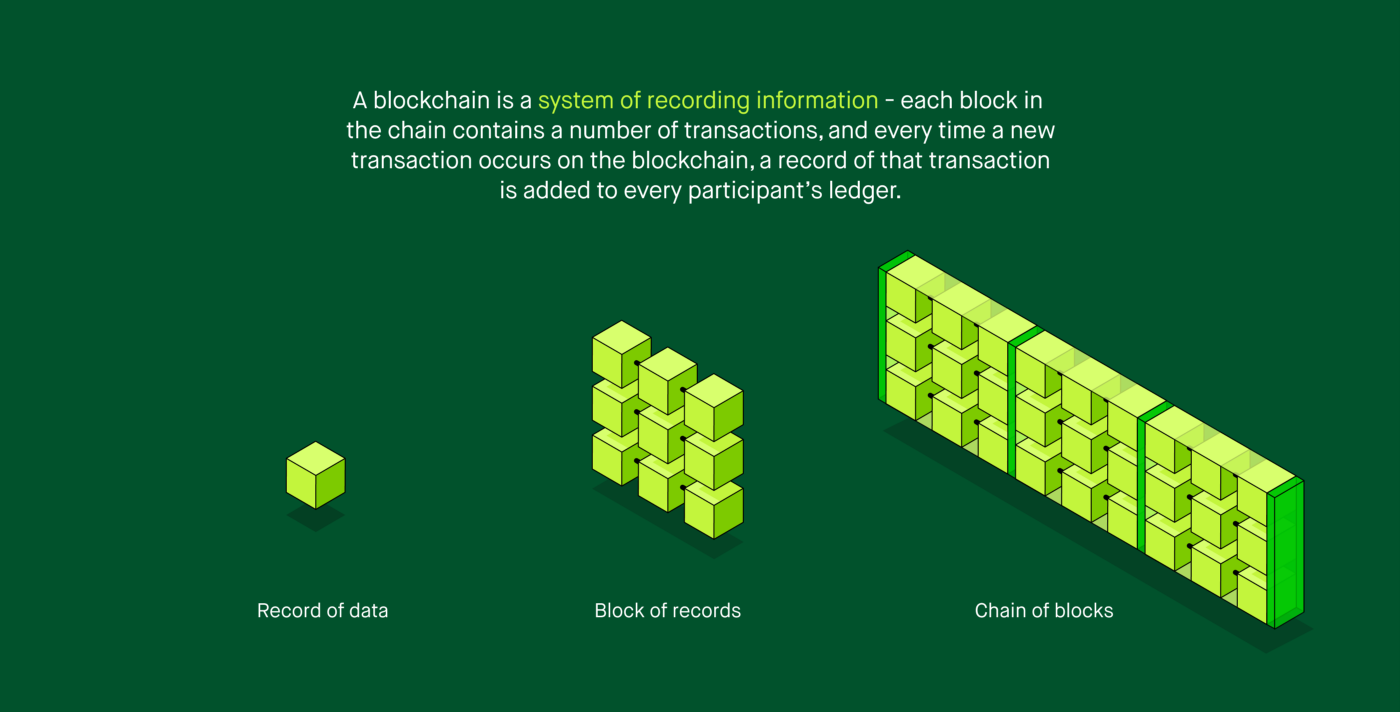Crypto 101: Breaking It Down

Over the past few years, cryptocurrency has grown from a niche interest for techies into a powerful force reshaping the global financial system. And yet, despite crypto appearing in our newsfeeds, on the nightly news, and in pop culture, it can still be difficult to learn what crypto actually is and how to get started with it. On Robinhood, you can buy and sell cryptocurrency, and grow your portfolio with a diverse array of options, but the first step is to educate yourself.
So, what is cryptocurrency?
Cryptocurrency is a digital form of currency similar to dollars and euros (or whatever you keep in your wallet). Because its value can be translated to more traditional currencies, it can also function as an asset that appreciates or depreciates, like gold. The most famous cryptocurrency is Bitcoin, but there are also others like Ethereum and Dogecoin. Rather than being backed by a government or central bank, cryptocurrencies are usually decentralized and run on the blockchain.
Okay, got it. What’s a blockchain?
A blockchain is a ledger — a record of every transaction involving a particular cryptocurrency. The big thing to understand about blockchains is that they can be decentralized. Rather than having a single source or authority tracking a cryptocurrency, the blockchains are managed across peer-to-peer networks. In layman’s terms, this makes it exceedingly difficult to forge a cryptocurrency transaction because most participants in the network need to agree that the transaction is valid.

How do we know that the network is secured?
Blockchains rely on consensus — which verifies transactions and the order of the blockchain.
Just making sure I’ve got this right: cryptocurrency is a decentralized, digital form of money whose transactions are verified on a distributed ledger called a blockchain.
Yep, you got it.
Cool… but if cryptocurrency is a digital thing, can’t someone just hit copy-paste and create infinite money? And wouldn’t that render all crypto worthless?
I’m glad you asked, because now we get to talk about cryptocurrency mining, which does not actually involve digging into the earth. For some of the most notable cryptocurrencies, coins can be created by running computer programs that solve time-intensive math problems. When one of these math problems is solved, a coin gets created. As new coins are created, the problems become more difficult for computers to solve, just like how a mineral vein in the earth eventually runs dry. Fun fact: in 120 years or so, bitcoin will stop creating new coins altogether, and network operators will be incentivized entirely by transaction fees.
Where do I keep my cryptocurrency?
Crypto is kept in wallets, just not the leather, monogrammed kind. Crypto wallets have two main components, a public address and a private key. The former allows you to receive money and the latter acts as a password so a user can access their wallet and spend their coins.
Most users keep their coins in a wallet custodied by an exchange or platform like Robinhood. Some users prefer to keep the coins offline in their own personal wallet.
Got it! Where can I buy some crypto?
Good news: you can buy crypto in the Robinhood app as easily as you would a stock or options — and similarly commission-free. We offer seven coins including Bitcoin, Ethereum, and Doge. If you place an order and spend $100 to buy Bitcoin, you’ll get $100 worth of bitcoin. For us, it’s a no-brainer — yet for most other crypto exchanges, fees are still the norm and you’ll pay up to 4% just to buy and sell crypto. See for yourself. For more info, be sure to check out our knowledge base on Robinhood Learn for more on the ins and outs of crypto.